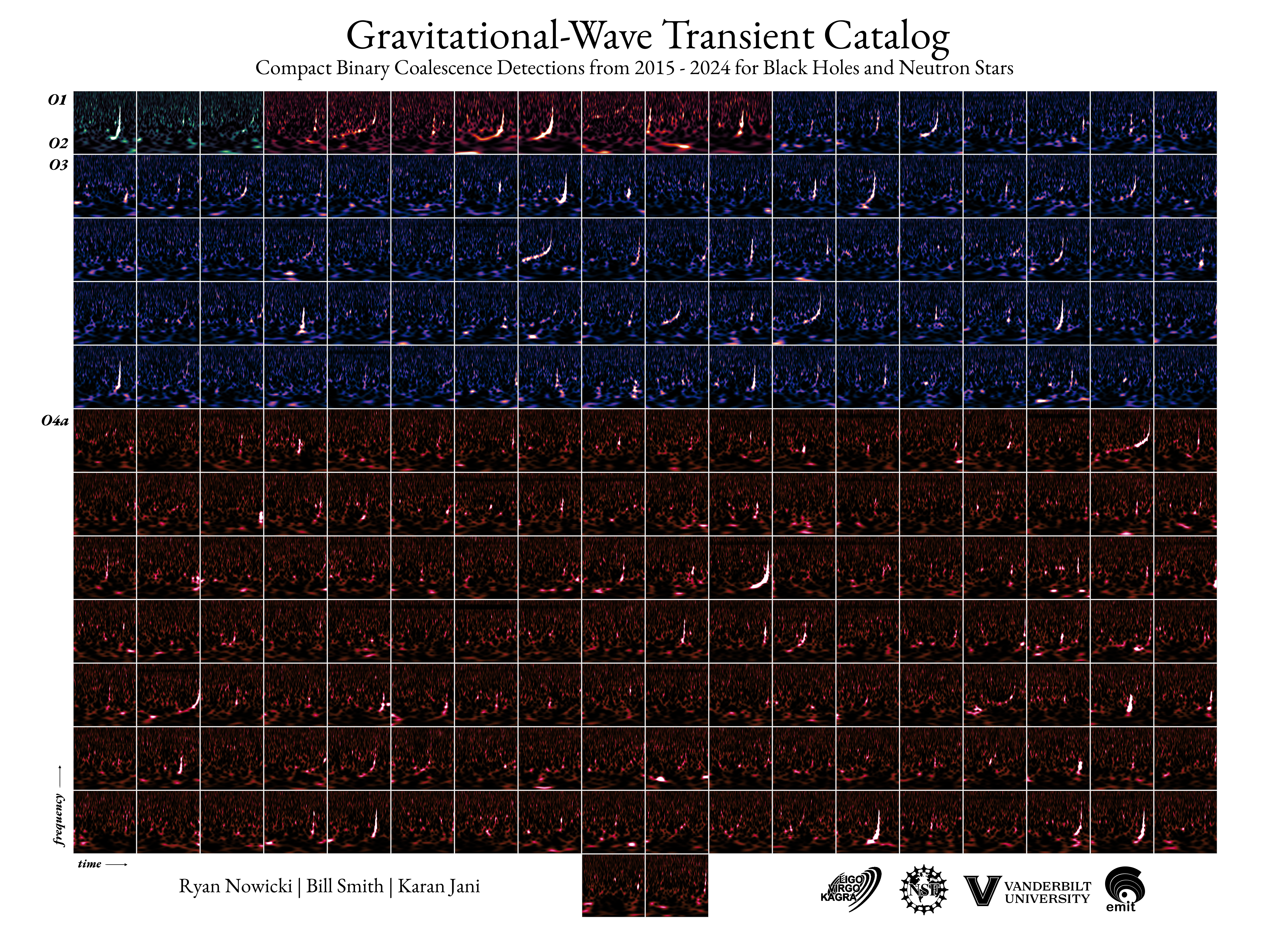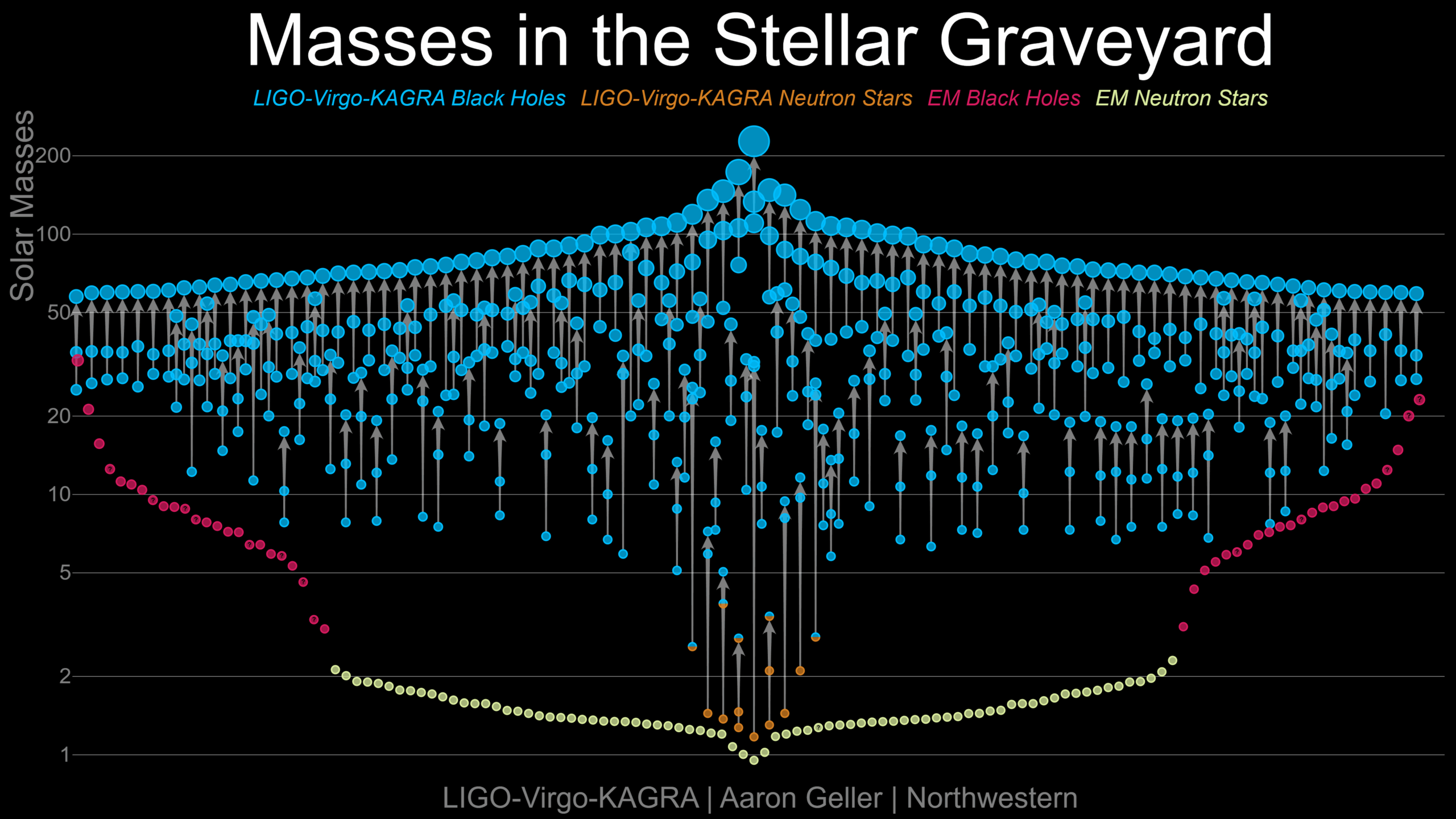August 26th 2025 marks an important date for the international LIGO, Virgo, and KAGRA (LVK) gravitational-wave network. The collaborations are releasing the interferometric strain data from the first part of the fourth observing run (O4a) that took place from May 24th, 2023, to January 16th, 2024. More detailed information about the data release can be found on the Gravitational Wave Open Science Center (GWOSC).
In addition to the data, the LVK is also releasing version 4.0 of the Gravitational Wave Transient Catalog (GWTC-4.0), which contains 128 new significant gravitational wave signal candidates. In the coming weeks, the LVK will also be sharing several companion papers to accompany the catalog, summarizing its implications for the broader fields of astrophysics and cosmology, testing Einstein’s theory of general relativity, and searching for signatures of gravitational lensing. These collected works are in the process of submission to the Astrophysical Journal Letters for eventual publication as a Focus Issue.

This figure shows the time and frequency signature of the candidates included in the GWTC-4.0 release, arranged by observing run. Each run is highlighted with its own color palette, showing how the catalog has grown in the past decade. [Credit: Ryan Nowicki / Bill Smith / Karan Jani]
The GWTC-4.0 release includes several interesting candidates, including the recently announced GW231123 – likely the highest-mass binary black hole merger observed to date. The associated data release includes not only the interferometric strain data, but also timestamped segments to assess information about data quality, and data products describing the detailed properties of the new signal candidates. Additionally, it includes a subset of data spanning May 15th – 19th, 2023 used in gravitational wave searches associated with supernova 2023ixf and the neutron star-black hole binary candidate GW230518_125908.
This release marks the first in a sequence of planned public data releases from the LVK’s ongoing fourth observing run (O4), currently scheduled to continue through November 2025. In addition to data releases and journal publications, the collaboration also provides public alerts for gravitational wave event candidates in real-time via NASA’s General Coordinates Network (GCN). To date, the collaboration has published over 300 such alerts across its four observing runs. The LVK Collaboration will continue to share O4 results as they emerge, with each new discovery adding to our rapidly expanding understanding of the universe’s most extreme events.
You can read more about this release on our dedicated O4a catalog page.

